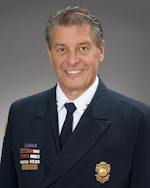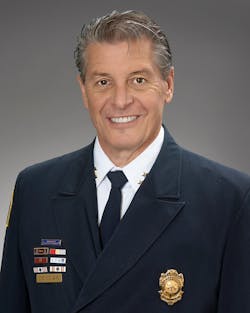Death in the fire service is and always has been a sensitive subject. This article in no way is meant to discredit anyone who has paid the ultimate sacrifice.
One of the reasons that most public line-of-duty-death (LODD) reports look similar is that no one should write or read a report that basically says that someone did something wrong. However, somewhere within the fire service, there must be an honest look at what we are in fact doing as a professional fire service, at some possible hidden factors that could contribute to fireground injuries and, even, deaths.
Culture
There has been a divisive debate within the fire service for about 10 years now. Are we overly safety-conscious, or are we the tough, brazen firefighters who swore an oath to save lives and property at all costs?
For those of you who are willing to risk your life at the next structure fire, kudos to you, and thank you for your service. We all should be trained, fully prepared and committed to crawl down that hallway or “bury up” to save the life of a civilian, even at great risk.
Before I am accused of being from the “safety only” camp, I firmly believe in the prior two sentences, but the question—and a factor in injuries and LODDs, and the basis for argument within the fire service—is how far do we take this?
A chief officer can order you into a burning building to conduct an aggressive interior attack or to search for possible victims. No questions are asked. Everyone is willing to go. However, if five minutes later that same chief officer orders everyone out of the building, there often is hesitation. “Chief, give us one more minute!” Even worse, the orders are ignored for a minute or two. Still worse yet, freelancing occurs.
What happens at those fires where the same chief officer says, “Don’t go in” or “We are going defensive.” Does the chief officer get accused of being overly safe or not living up to the oath? Why is this important? What decision likely will be made when the chief officer hasn’t yet arrived at the fire?
I understand that abandoned structures and buildings that are reported to be vacant often are occupied. From a professional perspective, that doesn’t mean that every single boarded up building and every reported empty building has someone inside of it. Is it really professional to bury up in every last one of them under the guise that they could possibly be vacant? Some say, “Yes, they all are occupied until we prove differently. Even the homeless and addicts matter.” Given this, why do so many injury and LODD reports center on deploying handlines and simply fighting fire and not actually on searching or rescuing victims? If every single burning building is believed to have someone in it, why don’t reports identify the initial crews that conduct a search or a rescue? Why aren’t we focusing on situational awareness and doing a better job of conducting a primary search? Better yet, if the life of a homeless person or an addict is worth risking one’s life, why weren’t we as caring and passionate three hours earlier when we ran on the same victim lying behind a shopping center? Personally, I am fine with either choice. Just pick one and stick with it.
Complacency
We are willing to risk our life to save anyone who’s trapped in a fire. That should mean we are ready to do that on each and every incident. That means we are fully trained, mentally and physically prepared, and professionally dressed to conduct any and every aspect of our job to save that victim.
We don’t let our guard down on incidents that don’t appear significant during dispatch or approach. No compromise to SOPs or MOPs because you got away with it the last time.
Attitude
Both of the previous factors are addressed by your attitude. Do you wish to be professional? Do you wish to be able to push yourself to enter a burning building and save a life? If so, then focus your attitude on avoiding complacency and make certain that the culture of your organization is in line with being professional.

Daniel DeYear
Daniel DeYear recently retired from Dallas Fire Rescue where he served as deputy chief of the training division. He has been with the department for more than 30 years. DeYear previously worked for the Carrollton, TX, Fire Department for nearly 10 years, serving in several capacities, and then for two years as an international fire marshal for the U. S. Department of State, Foreign Building Operations. In conjunction with the latter, he travelled to dozens of countries to provide fire and life safety to U.S. embassies and consulates. Currently, DeYear also serves as the chairman of the Texas Commission on Fire Protection’s Fire Fighter Advisory Committee and is a member of the organization’s Curriculum & Testing Committee and Health and Wellness Committee. He was the Texas Association of Future Educators 2020 Instructor of the Year. You can find more here: chiefdeyear.com.






